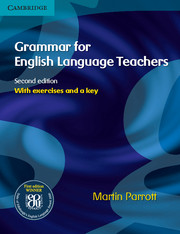25 - Finite adverbial clauses
Published online by Cambridge University Press: 09 February 2023
Summary
Key considerations
Learners often find it more helpful to learn the meaning of particular (subordinating) conjunctions and to practise using them appropriately than to think explicitly in terms of adverbial clauses.
Although we may choose not to use the terms ‘coordinating’ and ‘subordinating’ when we teach, learners need to understand that some conjunctions have a coordinating function and that others are subordinating conjunctions. Equally, they need to understand the difference between coordinated and subordinate clauses.
Learners need to know which subordinating conjunctions allow the adverbial clause to come before the main clause.
Learners often find it easy to carry out exercises in which they have to insert an appropriate conjunction, and they may find it easy to carry out exercises where they combine two sentences into one consisting of a main clause and a subordinate adverbial clause. They may still need a lot of encouragement, however, to use subordinating conjunctions when they speak or (more especially) write at greater length and more freely.
What are adverbial clauses?
What do they do?
Adverbial clauses are a category of subordinate clauses. They are linked to a main clause and tell us something about the information in that main clause. In this respect they are similar to adverbials.
Adverbial clauses start with a conjunction such as when, although or in order that These are known as subordinating conjunctions because (unlike the coordinating conjunctions and, but and or) they link two clauses of unequal importance. Some subordinating conjunctions consist of one word (e.g. after, although, as, before, if, once, since, though, when, whereas, while). Others consist of of two or more words (e.g. as if, as soon as, as long as, in that, in order that, so that, such that).
We usually teach even though as a two-word conjunction, but we can combine eve. with other conjunctions too (even if, even when). We can also combine just with a number of conjunctions (e.g. just as, just as soon as, just when).
Other factors
Meaning
The following shows the main meanings expressed by subordinating conjunctions (and therefore by the adverbial clauses themselves).
- Type
- Chapter
- Information
- Grammar for English Language Teachers , pp. 386 - 397Publisher: Cambridge University PressPrint publication year: 2010



